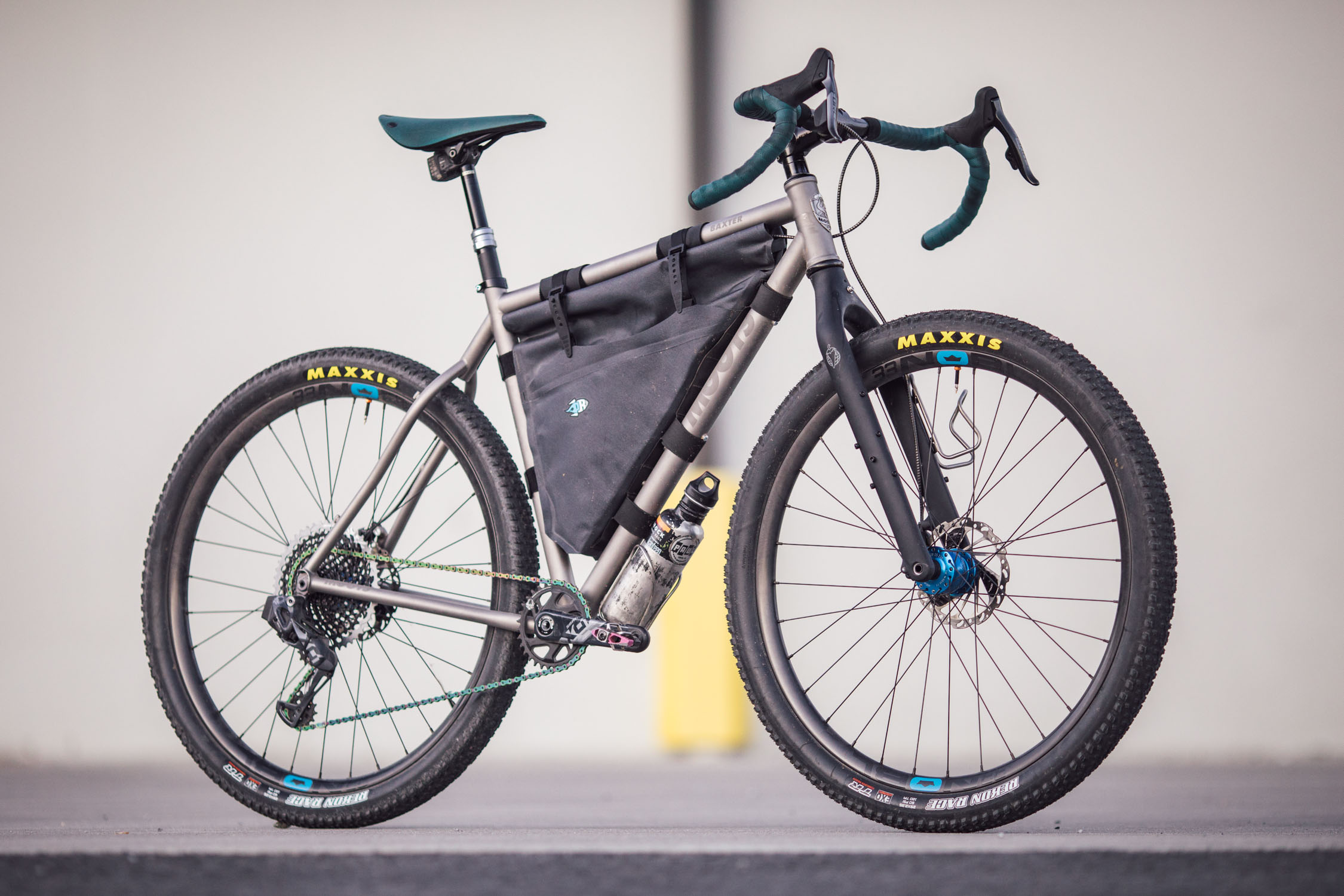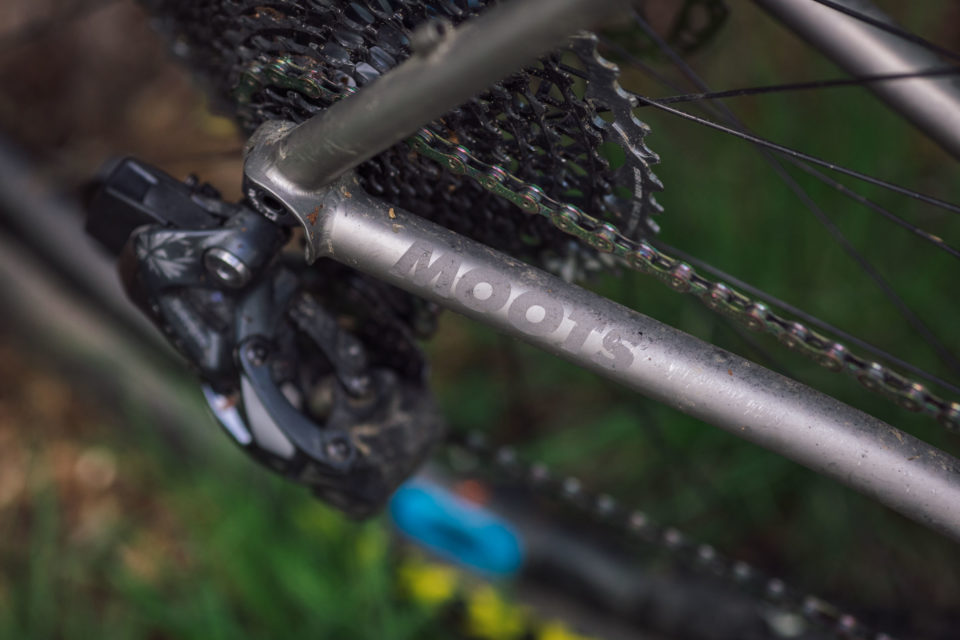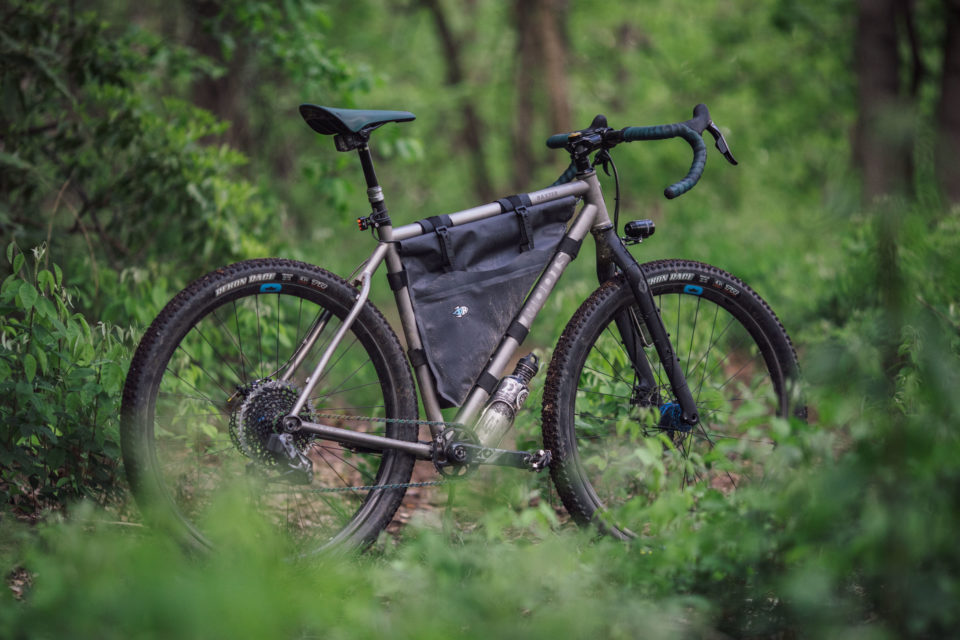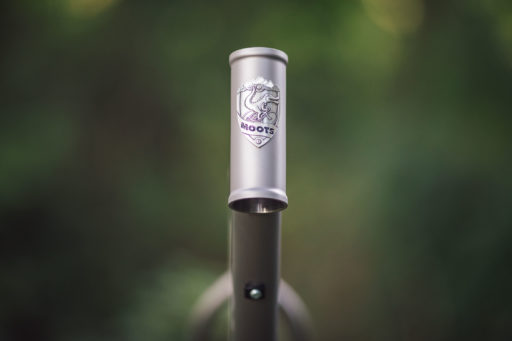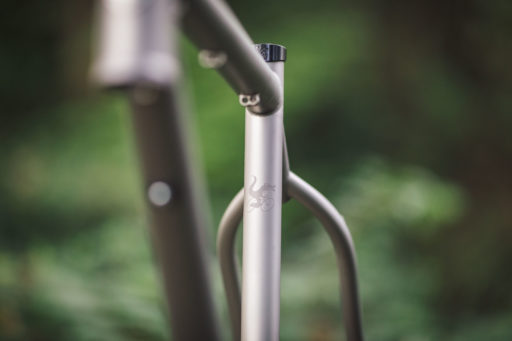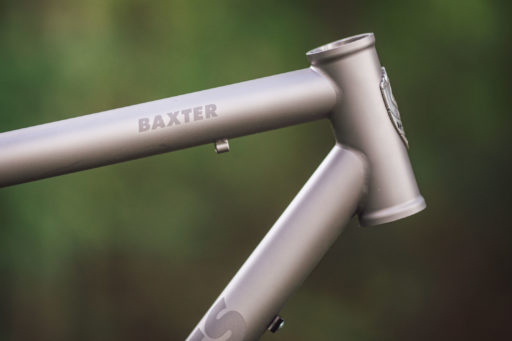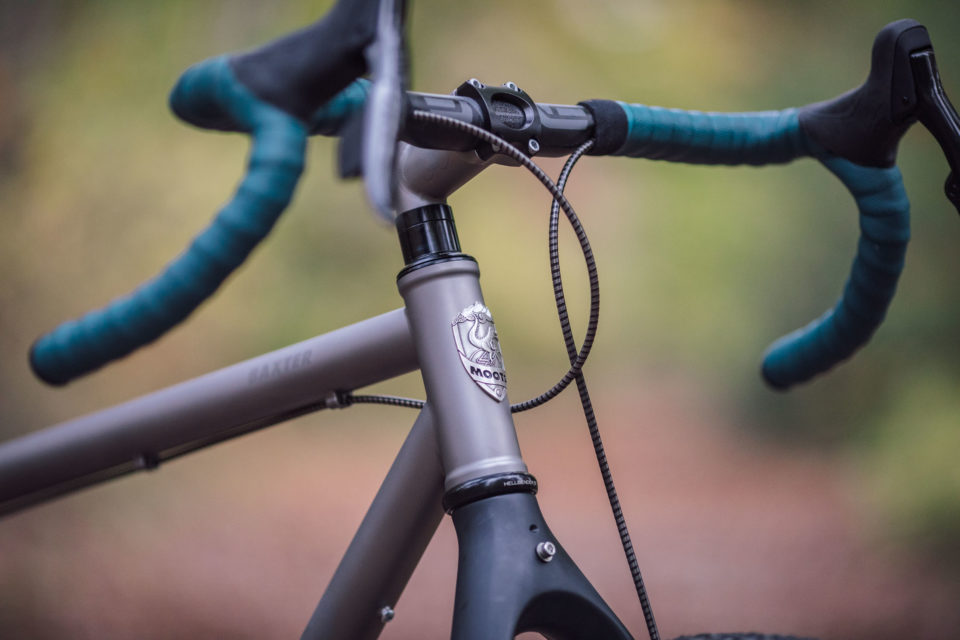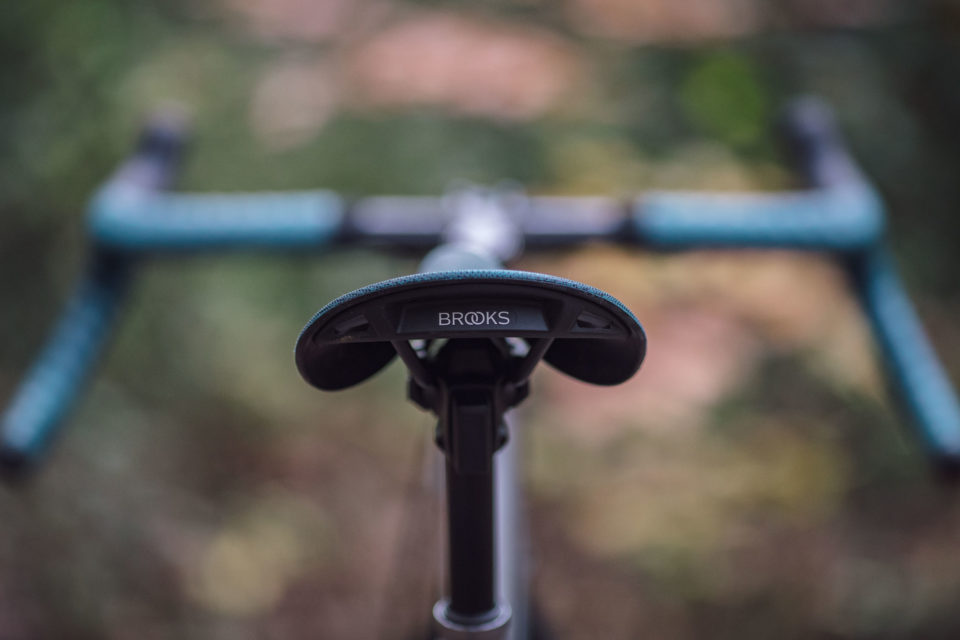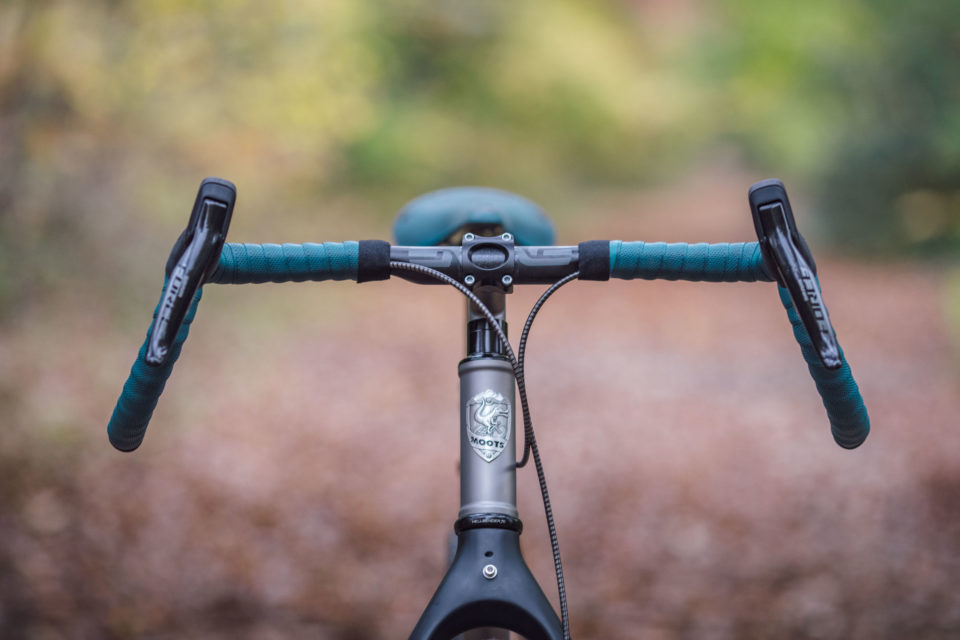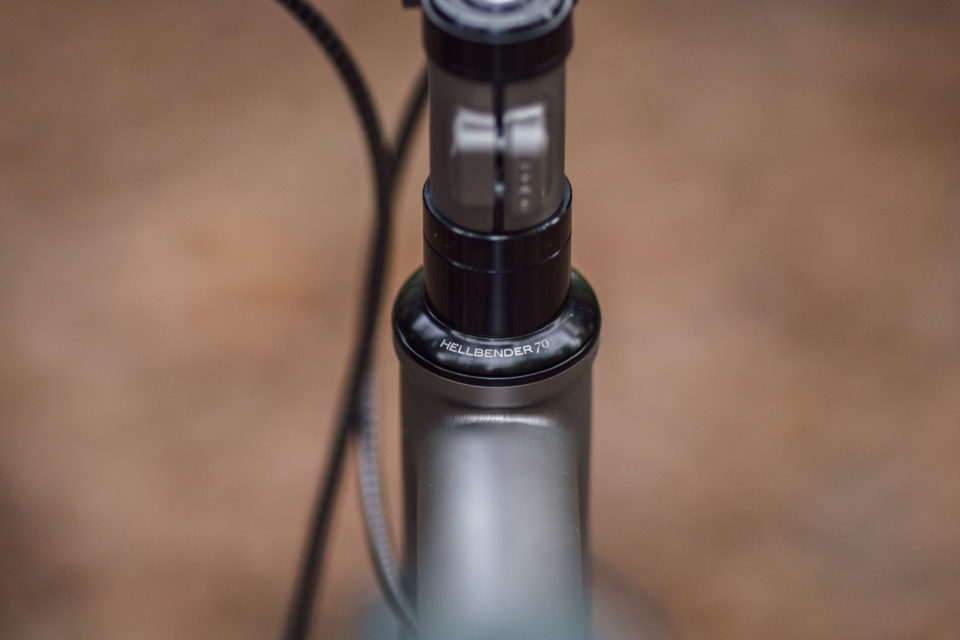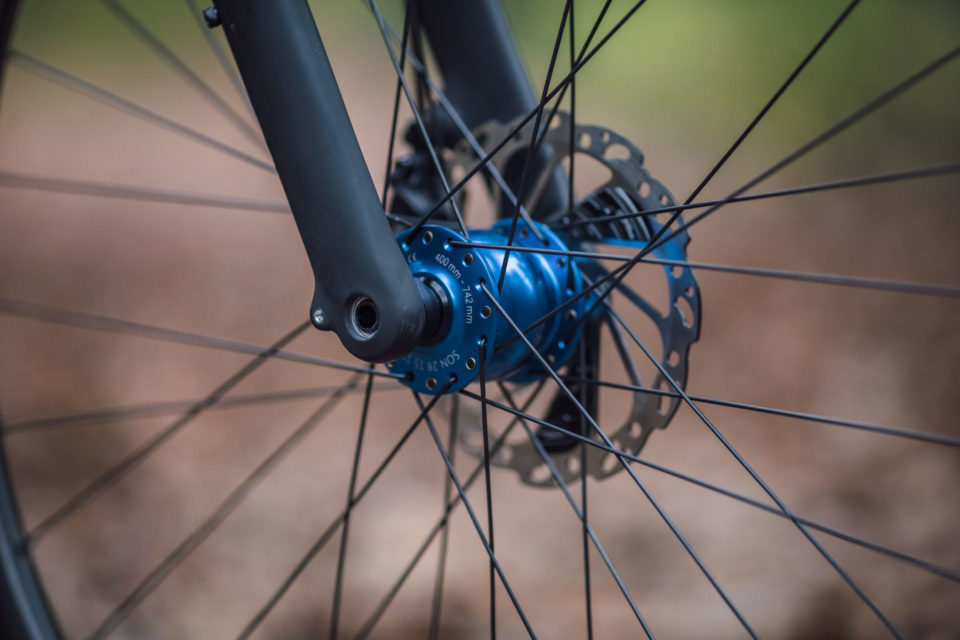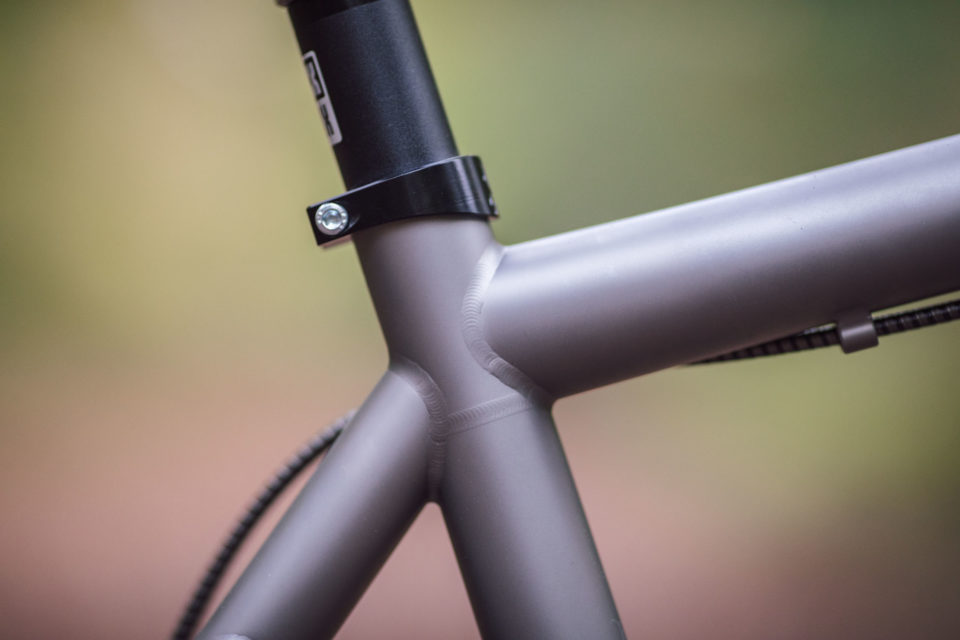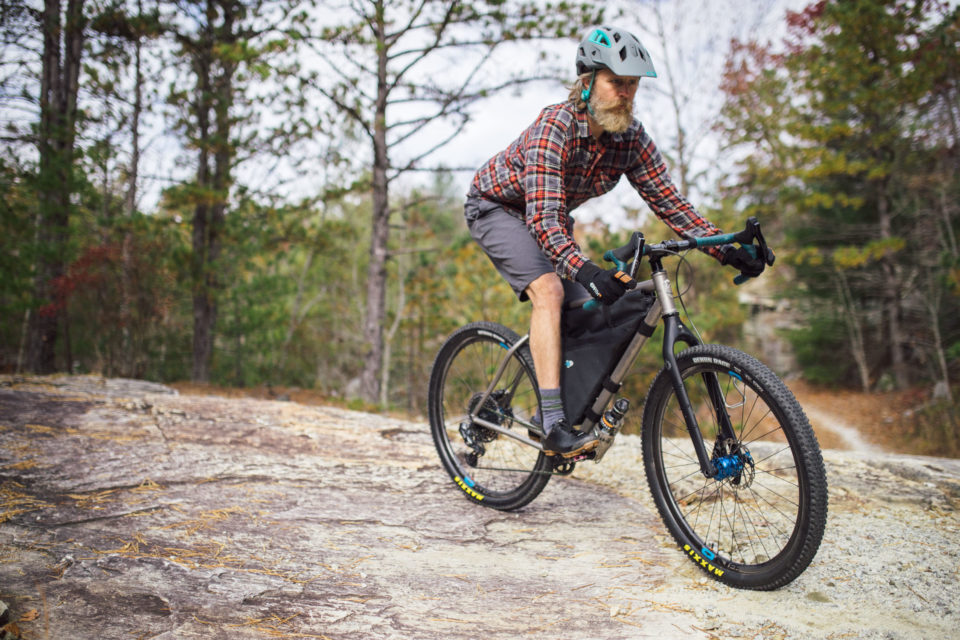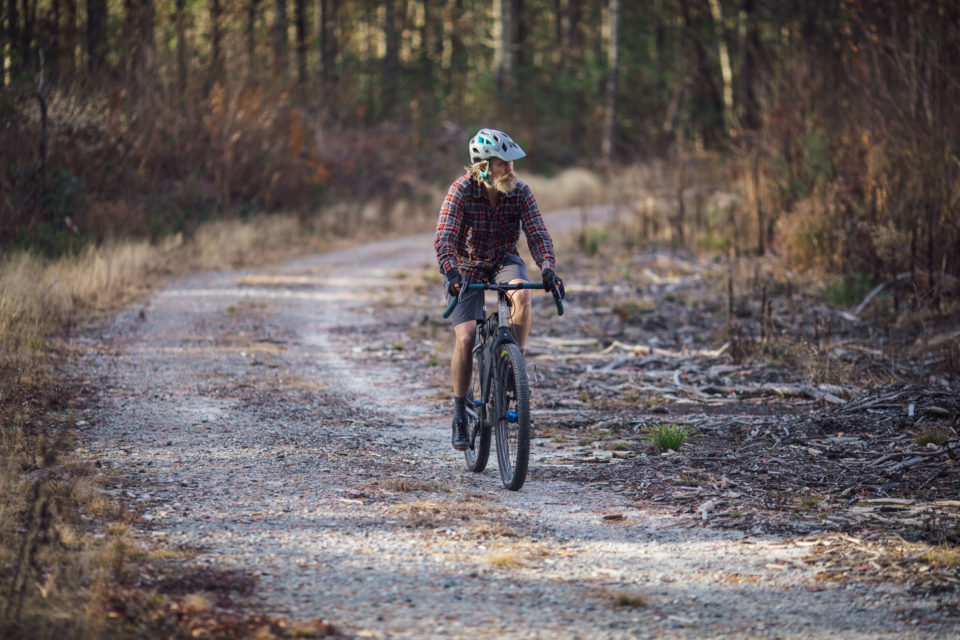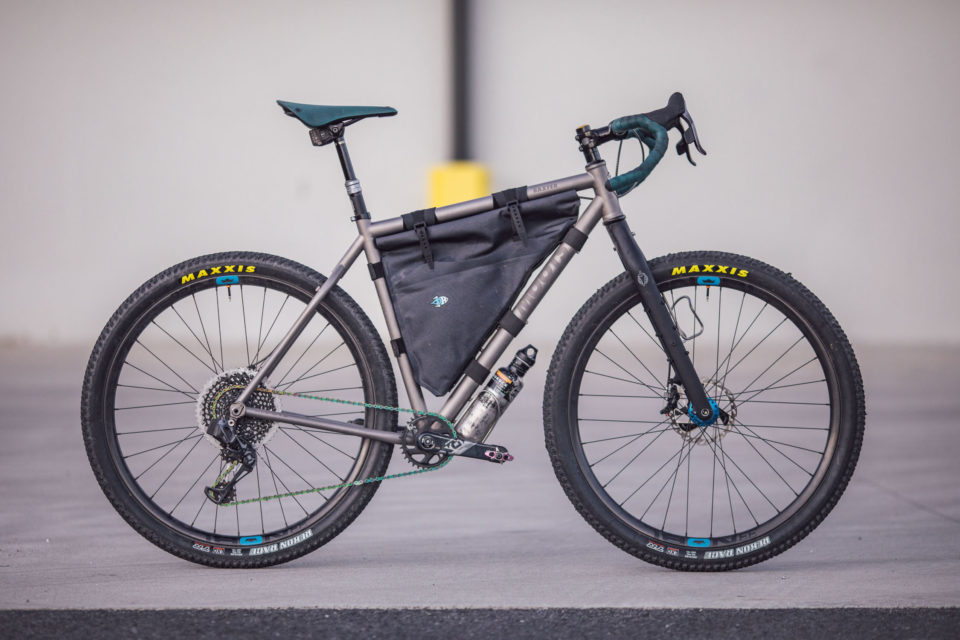MOOTS Baxter Review
Share This
Years after its initial release, we finally got our mitts on the newly updated MOOTS Baxter for an eight-month test ride on trails, gravel, and everything in between. Logan put nearly 1,000 miles on it for this in-depth review, complete with a highlight reel video, comparison to other Tour DIvide-specific bikes, and loads of photos.
Named after the shop’s then resident chocolate Lab (RIP), the MOOTS Baxter was the result of years of development to create the brand’s first drop-bar 29er. I’ve been itching to review the Baxter since its release at the 2016 Interbike Expo (also RIP). As a matter of fact, we named it one of The Most Interesting Bikes We Want to Review in 2017 that year. Nearly three years later, we finally got our hands on one to build up, ride hard, and pick apart. The recently updated MOOTS Baxter got a Boost 148mm spaced rear end, a 30.9mm seat tube, and dropper post routing.
You might be wondering why I wanted to test the MOOTS Baxter so badly? The most salient answer is that it’s one of only a small handful of bikes created specifically for the Tour Divide, an event and route that’s a cornerstone of bikepacking. A more nuanced explanation, which I’ll dig into later, is that it’s not a gravel bike at all, but more of a mountain bike with road tendencies. After kitting out the frame with choice components—many of which were also in for review—I put quite a few miles on the Baxter over the last eight months for a full test. Read on for details…
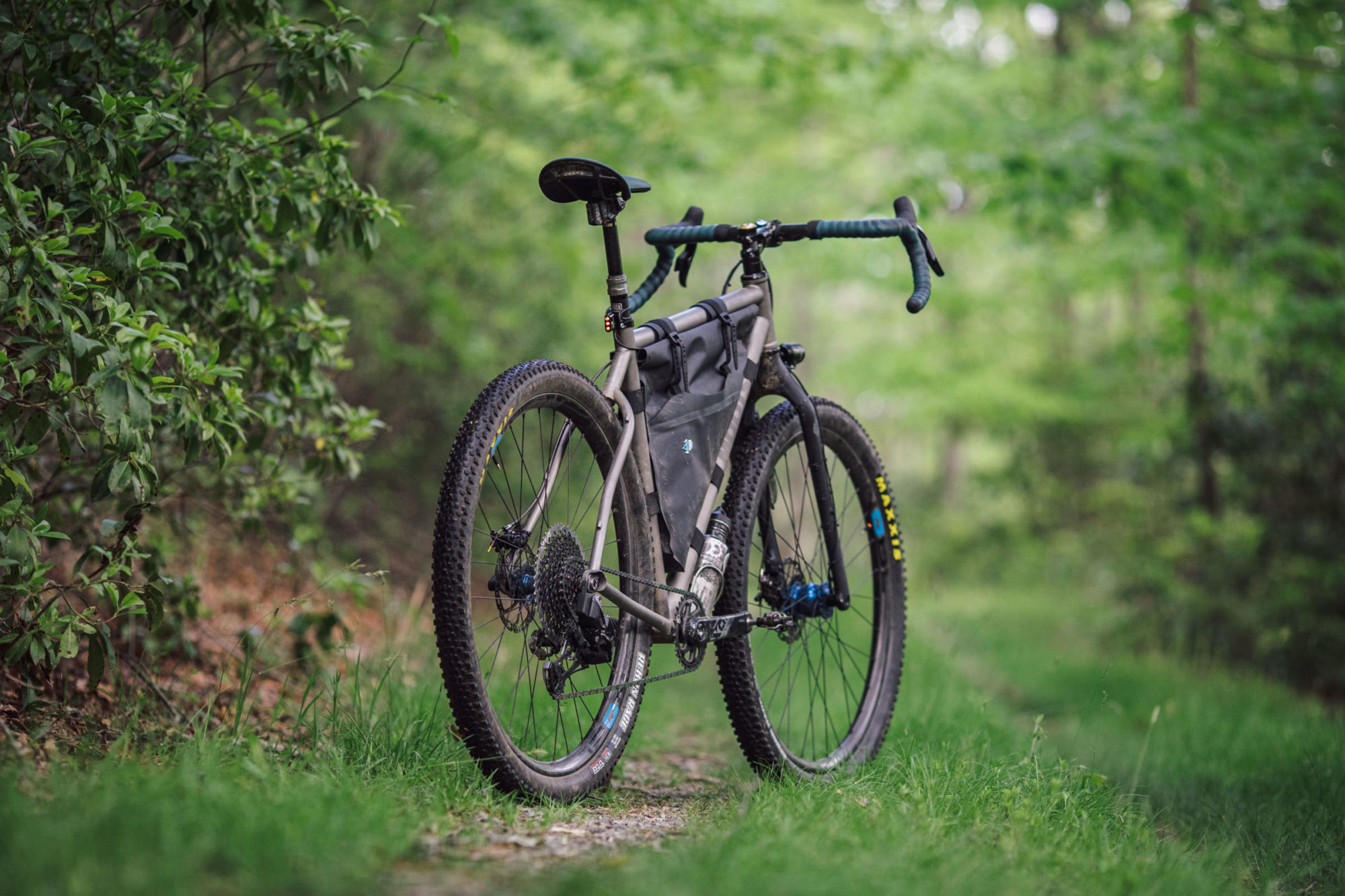
- Highlights (Large)
- Frame/Fork: 3/2.5 titanium / Carbon
- Angles: 71.25° Headtube, 73.75° Seattube
- Reach/Stack: 393mm / 640mm
- BB Drop/Chainstay: 75mm/445mm
- Bottom Bracket: Threaded 73mm
- Hub specs: 148×12 (rear)
- Seatpost Diameter: 30.9mm
- Max Tire Size: 29 x 2.3”
Illustrious Space Metal
Ten times out of ten when we review a high-end bike, we hear comments and quibbles about price vs. value, so let me start off this review by replying in advance. Yes, MOOTS titanium is expensive. But many would argue that there are several points to justify the price, factors that ultimately make this bike special. One is the fact that the frame is made in Colorado by a small team of individuals who have been working exclusively with titanium for 25 years, and that this legacy and experience percolates into MOOTS’ tubeset choices, aesthetics, and the sheer perfection of their tubing bends and double-pass welds. And while all that may sound somewhat marketing-speakish, I can honestly say that many of those facets became crystal clear once I plucked the frame from its cardboard shipping container and placed it on my favorite stump for photographs.
Aside from the intangibles mentioned above, there are a few material features that make the Baxter frame interesting, and uniquely MOOTS. For one, the company uses their own proprietary, seamless Pi Tech 3/2.5 titanium tubing, which purportedly provides “a coveted silky-yet-stiff Moots ride quality.” For those unaware, there are basically two types of titanium common to bicycle frame manufacturing. First is 3/2.5 titanium, an alloy consisting of 3% aluminum and 2.5% vanadium, which makes it 94.5% pure titanium. This particular alloy is known for its excellent strength-to-weight ratio, workability, corrosion resistance, and fatigue life—which means that over its lifespan it can take a lot of beatings. The other titanium alloy common in bikes is 6Al-4V (6% aluminum/4% vanadium), which is technically less pure titanium, but stronger, more expensive, and difficult to make into tubing. As such, it’s often used for dropouts and other cast solid parts for its strength.
Excluding the head tube and bottom bracket shell, the Baxter frame is constructed using six out of MOOTS’ 30 sizes of double-butted Pi Tech tubing (each of which also comes in three different wall thicknesses). The Baxter tubeset consists of a 42mm downtube, 38mm top tube, 35mm seat tube, 22mm chain stays, and a unique slingshot-style seat stay junction made of 29mm and 19mm tubes. MOOTS claims that by appropriating specific tube sizes and wall thicknesses, they can fine tune a desired ride quality for a particular bike, per individual size, even. Therein lies the beauty of titanium, and one of MOOTS’ principle strengths. While carbon layup and design have advanced in the last few years for similar frame tuning sophistication, there’s certainly something magical about the supple yet lively ride properties of titanium.
Other frame details include winged/hooded rear dropouts with polished, bolt-in axle inserts/derailleur hanger and fabricated pass-through cable route bosses. While some might argue that a bike with this price tag should have internal cable routing, I actually prefer the simplicity and ease of maintenance that comes with external routing, and MOOTS’ thru-route bosses are really nice. And, last but not least, the Baxter also gets MOOTS’ lifetime frame warranty.
Do all of these details justify the price tag? Honestly, $3,425 isn’t that crazy for a US-made Ti frame—that is, for those of us who are in the US willing and able to support US manufacturing and invest in a lifetime bike frame. By comparison, the Chinese-made Why Wayward and Ti Timberjack—two of our other favorite titanium bike frames—each fetch around $2,400-2,500. So, 30% more for a small-business/USA-made Ti doesn’t seem that unreasonable to me.
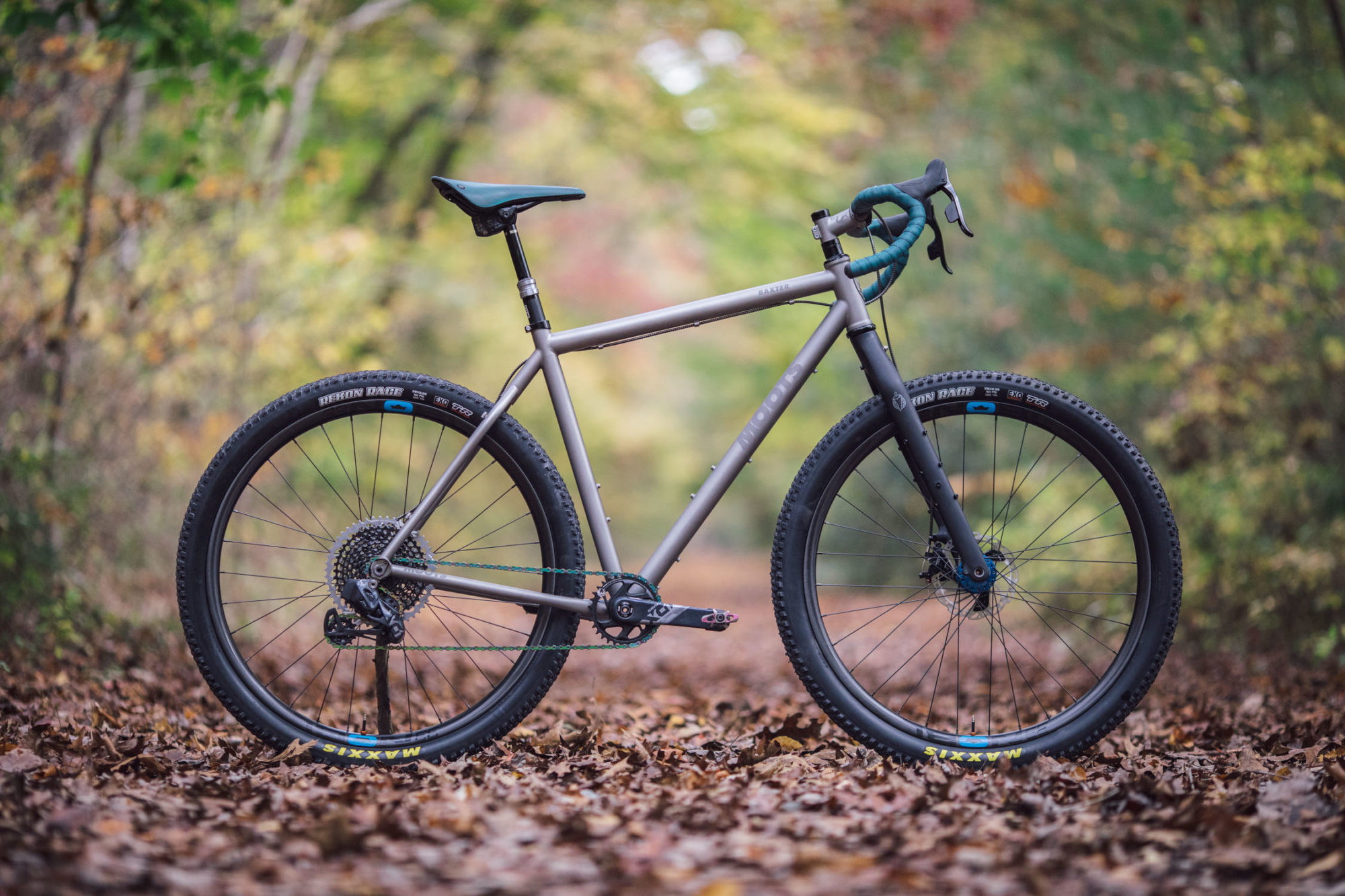
Build Kit
When MOOTS agreed to send a demo Baxter, I opted to receive the frame only. Other than the fact that I really wanted to see and photograph the frame in its full glory, I was particularly interested in approaching this bike as a project build, as if I were planning the perfect rig to ride the Great Divide Mountain Bike Route. With that, I set out with some parts I had on hand, and others I opted to review alongside the Baxter. Highlights of the kit include the reliable and utilitarian Salsa Firestarter 110 carbon fork (which had formerly been on Virginia’s Deadwood for a spell), a SRAM AXS Eagle/Force “mullet” drivetrain (which I reviewed here), and a slick wheelset featuring the new Onyx Vesper rear hub, a SON Dynamo up front, and NOBL TR33 carbon rims with a 27mm internal width, perfect for the 2.25” Maxxis Rekon Race, some of my favorite speedy XC tires. I also used my prized Enve G-series 460mm bars with Brooks’ Cambium bar tape to match the Octane C17 saddle. The previously reviewed Yokozuna Ultimo mechanical/hydraulic hybrid brakes rounded out this ridiculously nice build that weighed in at a cool 23.9 pounds (10.84 kg) once complete with a Supernova E3 Triple 2 front light, E3 Tail Light, and wiring. Here’s the full build kit.
- Frame/Fork MOOTS Baxter titanium (large)
- Fork Salsa Firestarter Deluxe carbon
- Rims NOBL TR33 carbon (32h)
- Rear Hub Onyx Vesper 148 x 12mm
- Front Hub SON Deluxe 110 x 15mm
- Tires Maxxis Rekon Race 29 (2.2 rear / 2.3 front)
- Headset Cane Creek Hellbender
- Stem MOOTS 70mm +/-6° (changed to Thomson X2 80mm/0° for fit)
- Handlebar Enve G Series (460mm)
- Tape Brooks Cambium (Octane)
- Seatpost RockShox Reverb AXS 125mm
- Brakes Yokozuna Ultimo
- Crankset SRAM Eagle X01 (175mm)
- Derailleur SRAM Eagle AXS X01
- Shifter SRAM Force 1 AXS
- Saddle Brooks C17 (Octane)
- Frame Bag Porcelain Rocket 52hz
Kit and Frame Drawbacks
Despite the super fanciness of this build and frame, it’s not without its drawbacks. One is inherent to the frame: the Baxter’s chainstay design limits chainring choices. With a 1x crankset, the maximum size is a 32-tooth ring, which is what I used. As such, even with the wide-range 10-50T Eagle cassette, I found myself spinning out on fast road rides. One solution would be to use e*Thirteen’s 9-52T cassette. Another would be to outfit it with a 2×11 drivetrain (the frame maxes out at 38/28 with a double).
A couple of other things that fell short could easily be rectified in MOOTS’ ordering process, which allows a few custom options. Had it been my decision, I would have added in rack mounts and sliding rear dropouts for versatility. MOOTS also offers fender eyelets, S&S couplers, and several interesting anodized finishes.
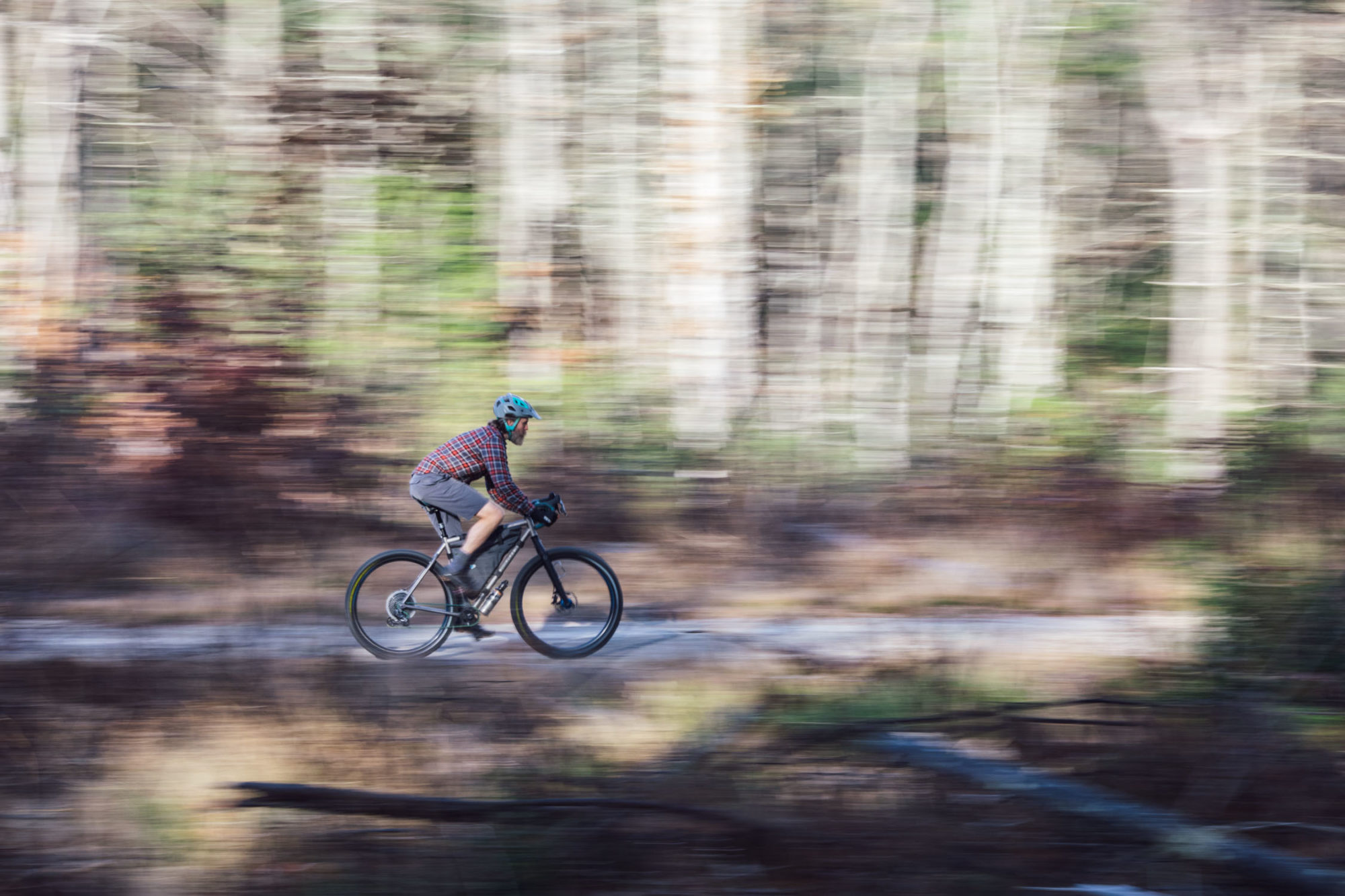
MOOTS Baxter and The Divide
There’s no doubt that MOOTS had access to the ideal proving ground to plan, prototype, and test a rig for running the Tour Divide—their headquarters is just a couple hundred meters off of the Great Divide Mountain Bike Route in Steamboat Springs, Colorado. So, what choices did they make while designing the Baxter that directly reflect the route? Better yet, why does it seem like the most popular bike used to race the Tour Divide comes in the form of a drop-bar 29er?
The latter question would probably get a more eloquent answer from Salsa’s Joe Meiser—Joe is arguably one of the founding fathers of the modern drop-bar 29er mountain bike and was the first person to finish the GDMBR on one (the Fargo). But the reasoning is pretty clear. Drop bars offer a comfortable multi-position cockpit that can provide multiple stances for a long gravel route, and that’s mostly what the GDMBR is. Add bigger tires to improve comfort and reduce fatigue on the rougher sections (and over the long haul) and you’ve got the perfect setup. Most Tour Dividers gravitate toward 29 x ~2.2” tires, which are bigger than gravel tires, offer more rollover, are more durable, and can still carry speed. Plus, there are a lot of great fast-rolling XC mountain bike tires in that size range that fit the bill, including options now coming out specifically for this type of riding.
MOOTS adhered to these principles when they conceived the Baxter. In essence, it’s mostly a 29er mountain bike designed around 29 x 2.25” tires with a shortened reach to accommodate drop bars. However, there are a few nuances to this frame that set it apart from the others in this category. To analyze the geometry, let’s compare it to a couple of other bikes in its field.
MOOTS Baxter vs. Salsa Cutthroat vs. Fargo
While there are a few other drop-bar 29ers in the same category as the Baxter—the Kona Sutra LTD and Curve GMX come to mind—only a couple of other production bikes are claimed to have been designed specifically for the Divide route. That said, the Baxter might be the least strictly focused on the route, with more of a propensity toward versatility. Before we dig in, here are the geometry numbers for all three (size large—or 58cm for the Cutthroat)…
| Metric | Fargo | Cutty | Baxter |
|---|---|---|---|
| Reach | 387 | 394 | 393 |
| Stack | 663 | 648 | 640 |
| Top tube length | 590 | 580 | 580 |
| Head Tube Length | 170 | 154 | 130 |
| Head Tube Angle | 69 | 69 | 71.25 |
| Seat Tube Angle | 73 | 74 | 73.75 |
| BB Drop | 70 | 70 | 75 |
| Chainstay Length | 445 | 445 | 445 |
| Wheelbase | 1108 | 1109 | 1078 |
| Fork Length | 483 | 483 | 483 |
| Fork offset | 51 | 51 | 51 |
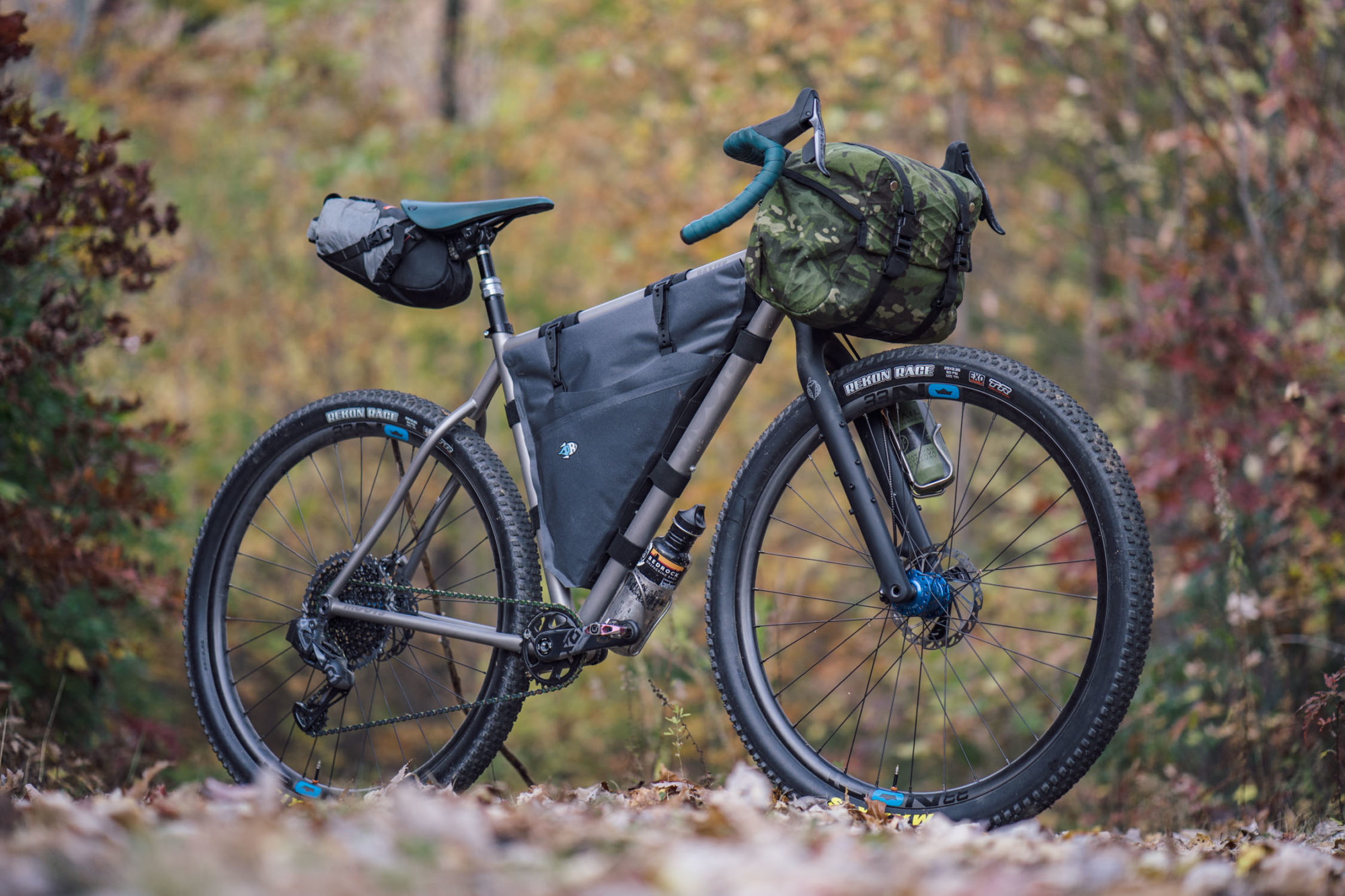
On the Road and Trail
The most notable departure from the two Salsas is the Baxter’s head tube angle, which is relatively steep by modern standards at 71.25°. As you’d expect, this makes it a quick handling bike. And you might also assume it’s not as confident or stable as its competitors on chunky descents. That’s partially true—I think the Cutthroat might edge it out for confidence on fast and chunky gravel—but I was pleasantly surprised to find that the Baxter was far from twitchy and unstable when descending. It actually felt at home bombing double and singletrack, and it was much more stable on gravel descents than most gravel bikes I’ve tried. It kind of finds a sweet spot in between stable and agile, which I quite liked. I think part of what balances the steep HTA is another measurement that differs from the two Salsas: a 5mm lower bottom bracket. This gives the Baxter a nice in-the-bike feel. And albeit a mountain bike at heart, the lower BB and steep HTA provide the Baxter with a little bit of road bike sensibility. It’s also worth noting that despite the HTA, I didn’t have any issues with toe overlap. This can be credited to a well-proportioned front-center (distance from the center of the bottom bracket to the center of the front hub). Compared to most gravel/all-road bikes, the Baxter’s longer front-center and chainstays help position the rider within the wheelbase, with their weight low and centered.
These characteristics along with the lower BB are part of what gives the Baxter a nice level of stability and control. According to MOOTS, much of their approach to this bike’s geometry was inspired on 1950s-1980s era touring and randonneuring bikes, which were designed to be longer in the wheelbase, slacker in the head angle, and more stable than their road racing counterparts at the time.
Ultimately, I think the MOOTS Baxter has less of a pure Tour Divide pedigree than the Salsa Cutthroat. It’s about 30mm shorter and a little less stable, in general. However, it’s no slouch in that department either, and it’s a little more playful and versatile as a result. So depending on your goals, that could either be taken as a pro or a con. Either way, I think it’s biggest differentiator is its titanium tube set. The Baxter’s top tube and down tube are made of larger diameter tubing with thicker walls than their gravel frames—tubing similar to that used in their hardtails for added strength and stability. The Baxter also uses a slightly thicker walled tubing for the seatstays to minimize any tail wag from saddle bags and help control the larger wheel/tire. And of course, they employed a 73mm bottom bracket shell and 30.9mm seat post diameter for compatibility with MTB drivetrains dropper-posts. All of those attributes add up to a bike built for big rides. And, despite the fact that it’s beefier than other MOOTS’ gravel frames, I found the Baxter still has a quick and lively feel when out for an afternoon rip.
- Frame MOOTS Baxter Size Large
- Actual Weight 4.09 pounds (1.86 kg)
- Place of Manufacture Colorado, USA
- Price $3,425
- Manufacturer’s Details MOOTS.com
Pros
- Hands down one of the most beautifully constructed bike frames I’ve laid eyes on
- Top-quality construction, aesthetics, and titanium tubing
- Tubing choices and materials are immediately evident in the ride quality
- Playful and responsive geometry that balances speed and quickness with stability and surefootedness
Cons
- Max 1x chainring is limited to 32T
- Albeit a worthy investment, it’s priced out of most people’s range
- The Baxter’s head tube angle might be slightly steep for some people’s taste, although I found that it has a very well balanced geometry, overall
Wrap Up
All in all, the MOOTS Baxter doesn’t break any new ground, and the latest iteration doesn’t jump on any trend-wagons with slacked out geometry or massive tire clearance. And unlike a lot of new bikes that have hit the streets lately, it doesn’t offer a lot of bells and whistles to tweak the tire size and geometry. Instead, it stays true to its lineage, takes a lot of cues from bikes of the past, marries them with a few modern standards and an incredibly elegant and balanced tubeset, and prevails as a bike that does a lot very well.
I’ve ridden a bit of everything on the Baxter, from graded gravel to pavement, and from rutted two-track to enduro-class singletrack, both loaded and unloaded. The two characteristics that always spring to mind when riding this bike are its unique buttery-solid feel, and near perfect balance. It’s kind of bike that resonates as one of those ideal one-bike solutions for folks in the drop-bar camp. It could be equally at home during a month-long journey on the Great Divide Mountain Bike Route as it would be ripping flowey singletrack on local backyard trails, or exploring forgotten double tracks in about any National Forest.
Please keep the conversation civil, constructive, and inclusive, or your comment will be removed.






